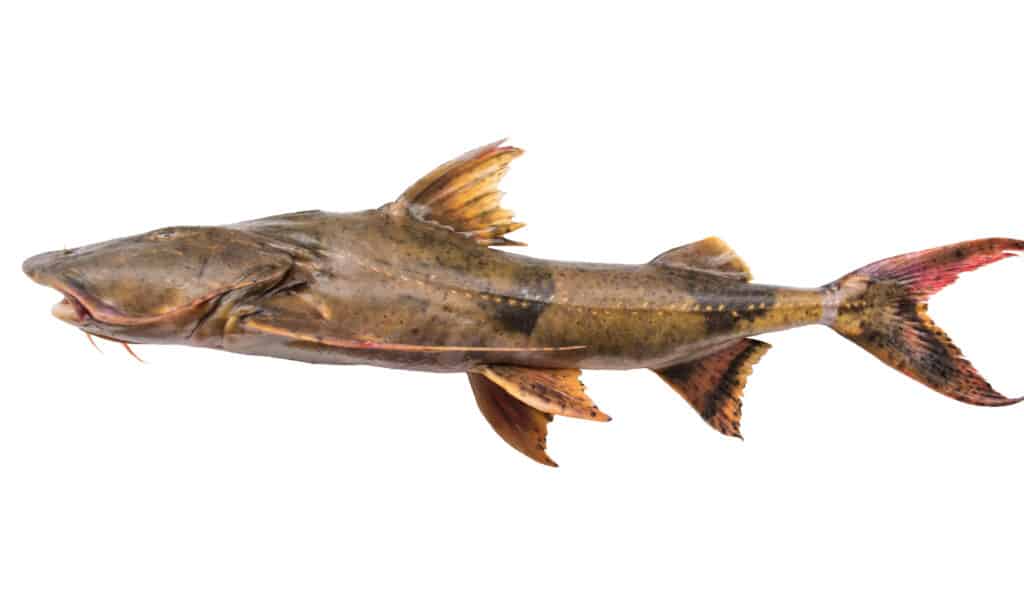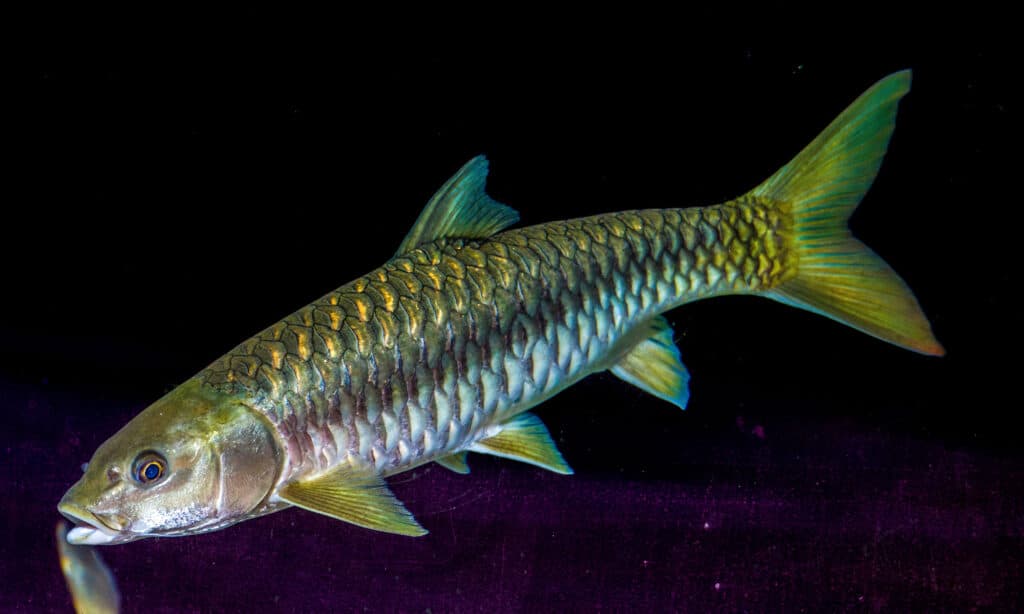Some of the largest fish of the Ganges River are the stuff of legends, while others are relatively unknown. The Ganges River is spiritually, economically, and ecologically vital to India and its people. Starting in the western Himalayas, the Ganges River, known locally as the Ganga, or the Padma, travels nearly 1,600 miles east across the northern face of India before emptying into the Bay of Bengal.
Here, we’ll discover more about the Ganges River, focusing on just what types of fish call this incredible river home. We’ll learn about some of the most common fish of the Ganges River, as well as the largest fish in all of India. Then, we’ll take a closer look at the three largest fish of the Ganges River, including one that might not seem like a fish at all.
Read on to discover just how big the largest fish of the Ganges River grow!
What Kind of Fish Live in the Ganges River?

Apart from fish, the Ganges River is home to South Asian river dolphins, gharials, and many species of mammals and reptiles.
©Jono Photography/Shutterstock.com
There are nearly 150 species of fish living in the Ganges River today. Of these, only a few can be counted as the largest fish of the Ganges. Unfortunately, the Ganges River is one of the most polluted waterways in the world. That, combined with overfishing, loss of wetland areas to agricultural needs, and the construction of dams, puts many of the river’s fish in peril.
Some of the most common fish in the Ganges River include the silver mahseer, snow trout, wallago, Indian mottled eel, clown knife fish, bronze featherback, bata, and spotted barb. Many of the fish in the Ganges are economically important to the people living on the river’s banks. They provide both food and saleable goods to millions of people.
What is the Largest Fish in India?
India is home to a vast array of iconic wildlife, including the Asiatic lion, great Indian hornbill, snow leopard, Asian elephant, Indian leopard, Indian rhinoceros, Bengal tiger, and lion-tailed macaque. But, just what is the largest fish in India?
India is home to more than one giant fish, as it turns out, and determining which species gets the title is no easy feat. But, only one of the contenders, the Cauvery humpback mahseer, makes its home outside the Ganges River. This fish is closely related to the golden mahseer of the Ganges; it can grow up to 6.5 feet long.
The 3 Largest Fish of the Ganges River
There is no single largest fish in the Ganges River. Instead, there are three river monsters living in the murky waters of the Ganga who, together, share the crown. Let’s take a look at the three contenders for the biggest fish of the Ganges River.
Ganges Shark

The Ganges river shark is thought to be the only exclusively freshwater shark in the world.
The Ganges shark is one of the largest fish in the Ganges River. This elusive fish lives exclusively in the salt-free waters of the Ganga. Formerly known as two species, the Borneo river shark and the Irrawaddy river shark, Ganges sharks are critically endangered. They’re requiem sharks, like bull sharks, spinner sharks, and tiger sharks, and they are often mistaken for bull sharks.
Ganges sharks grow up to 6 feet and 8 inches long. They’re gray to brownish gray, with lighter undersides and short, round snouts. Like many requiem sharks, they have large pectoral and dorsal fins. Due to their historical and increasing rarity, little is known about these sharks. However, they’re thought to eat various freshwater fish and stingrays, and they likely spend most of their time on the murky bottom of the Ganges.
Goonch Catfish

Also known as the giant devil catfish, the goonch catfish is little known outside of India.
©IAM Priew/Shutterstock.com
Made famous by reality TV appearances, the goonch catfish grows up to 6 feet 6 inches long. As a type of catfish, goonch catfish have heavy bodies and wide mouths designed for life in the muddy depths of the Ganga. They’re among the largest fish in the Ganges River and also among the most beautiful.
Goonch catfish have light brown bodies with dark brown to black bands near the fins. Their dorsal fins are highly variegated and tall, with large pectoral fins. Additionally, like catfish, goonch have several feelers on their mouths which they use to detect prey. Though little is known about their life cycle or population, they’re currently listed as Vulnerable. It’s highly likely that, given the tremendous size they grow to, goonch catfish are vulnerable to threats like overfishing and pollution.
Golden Mahseer

The golden mahseer is the national fish of Pakistan.
©Danny Ye/Shutterstock.com
One of India’s prettiest fish, the golden mahseer is undoubtedly one of the largest fish in the Ganges River. Golden mahseers are thought to grow up to nine feet long, though specimens over six feet have not been adequately documented. These fish have torpedo-shaped bodies with three pairs of pectoral fins. They range from red-purple to golden along the sides and fins. They have pointed snouts, and, in their domain, they are considered apex predators.
Golden mahseers eat a wide variety of food, including aquatic vegetation and algae, insects, amphibians like frogs and toads, fish, crustaceans, and even fruit that falls into the water. They’ve long been popular targets for sports fishermen due to the ferocious fight they put up when on a line. Unfortunately, they’ve been negatively impacted by overfishing, pollution, and even hybridization with other species.
The photo featured at the top of this post is © SUPACHAI TAISAENG/Shutterstock.com
Thank you for reading! Have some feedback for us? Contact the AZ Animals editorial team.







